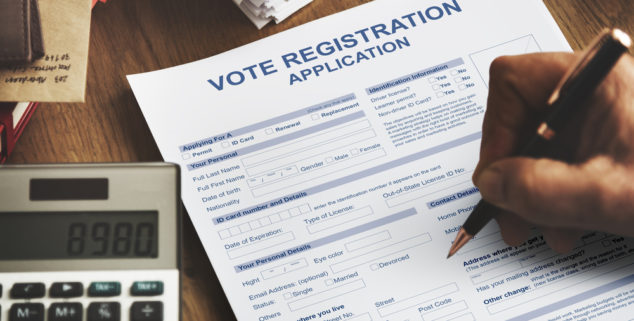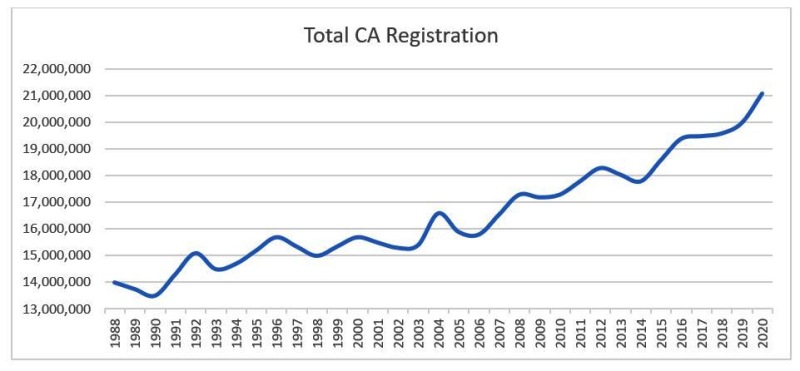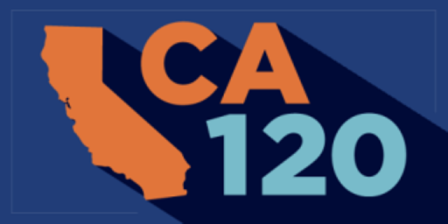News
CA120: Voter registration at highest portion of eligibles in 80 years
 A potential voter fills out a voter registration form. (Photo: Rawpixel, com, via Shutterstock)
A potential voter fills out a voter registration form. (Photo: Rawpixel, com, via Shutterstock)California has now reached an historic high of over 21 million registered voters. The current PDI voter file, after a full refresh of county files, puts total voter registration at 21,086,077. As a share of eligible voters, this puts the state at 83%, a higher rate of registration than we have seen since the presidential election of 1940.
This landmark registration figure comes just 18 months after the state first hit 20 million in March of 2019, and less than two years since the state first hit 19 million in October of 2018.
Two-thirds of the new registrants are Millennials or Generation Y (born after 1996) – something that would be expected since these are the voters aging-in to the state’s electorate.
For reference, the state hit 18 million for the first time in 2012 and 17 million in 2008.
In percentage terms, from 1988 through 2014, registration was increasing 2% during each presidential election cycle, but the average since 2016 has been 6% and in 2020 we are already at 8% with two more months of registration to go.
This recent swell in registrations isn’t just a function of voter enthusiasm – the state’s new “automatic” voter registration methods implemented in May of 2018 have been a big driver in the accelerated growth.
This includes over five million voters who have registered or been re-registered at the DMV and one million voters captured by the National Change of Address (NCOA) registrations that automatically re-registers voters when they move.
Two-thirds of the new registrants are Millennials or Generation Y (born after 1996) – something that would be expected since these are the voters aging-in to the state’s electorate. This registration surge puts these younger voters at 37% of the voter file. Of course, with their lower turnout rates, they were only 25% of the voters who cast ballots in the 2020 Primary.
While the numbers have grown, the share of the electorate choosing to become Permanent Vote by Mail has grown even faster.
Baby Boomers, at 29% of the total registration were an out sized 38% of the total vote in March.The partisanship of these new registrations shows some of the same shifts we have seen for years. Democratic registration has stayed flat at 46%, with No Party Preference/Other registrations increasing to 35% and Republican registration at 19%.
To see the new registration figures for your area, just check our count reports here.
For data and mapping of these numbers, click here to see our voter visualization data.
Some advanced notes for campaigns that are looking deeply at these numbers:
— The increase in registration through the DMV and NCOA has brought with it an increasing share of “passive” registrants – voters who might not even know they are registered. In the 2020 primary, these voters were 16-points lower turnout than “active” registrants. Our likely voter universes account for this differential in turnout, particularly when a voter has less prior vote history.
–While the numbers have grown, the share of the electorate choosing to become Permanent Vote by Mail has grown even faster. Fully 82% of the voters registered in the last 18 months have opted to become Permanent Vote by Mail. This is even before accounting for the 15 counties that mail all voters a ballot under the Voters Choice Act, or the COVID rules for 2020 that are causing the state to implement a system mailing every voter a ballot in the remaining 38 counties. In our data campaigns can differentiate between these types of voters and if they are being mailed a ballot out of choice or circumstance.
— Campaigns can also identify the nearly 13 million California voters who have successfully voted by mail in a prior election, and, importantly, the over 4 million voters who have voted, but always at their in-person polling site. Research that has been conducted in the last few months suggests these voters are going to be more hesitant to use the vote by mail system, and election history shows that those who have never voted by mail, but do for the first time, are much more likely to vote on or close to Election Day.
— The next 60 days could see some significant additional increases in voter registration – we are currently updating the entire state repeatedly, even more than our traditional 30/60/90/150 days pre-election schedule. And, of course, once voting starts we will be updating the ballots sent and received on a daily basis.
This coming election is going to have some new challenges, and the most important weapon for any campaign is the data.
—
Editor’s Note: Paul Mitchell, a regular contributor to Capitol Weekly, is the creator of the CA120 column, vice president of Political Data, Inc., and owner of Redistricting Partners, a redistricting consulting firm.
Want to see more stories like this? Sign up for The Roundup, the free daily newsletter about California politics from the editors of Capitol Weekly. Stay up to date on the news you need to know.
Sign up below, then look for a confirmation email in your inbox.

Leave a Reply